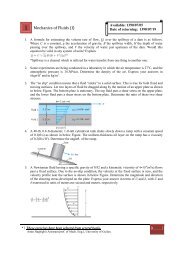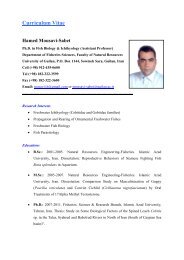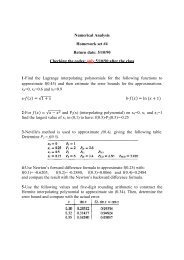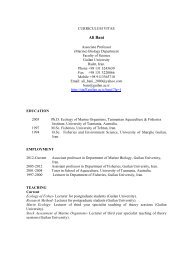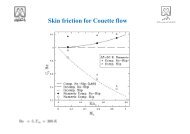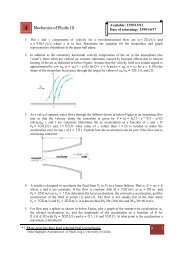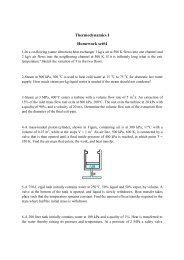The Behavior of Gases 1.1(b) (a) Could 25 g of argon gas in a ...
The Behavior of Gases 1.1(b) (a) Could 25 g of argon gas in a ...
The Behavior of Gases 1.1(b) (a) Could 25 g of argon gas in a ...
You also want an ePaper? Increase the reach of your titles
YUMPU automatically turns print PDFs into web optimized ePapers that Google loves.
1.3 (b) At 100°C and 1.60 kPa, the mass density <strong>of</strong> phosphorus vapour is 0.6388 kg m -3 . What is themolecular formula <strong>of</strong> phosphorus under these conditions?Solution:1.4 (b) A <strong>gas</strong> at <strong>25</strong>0 K and 15 atm has a molar volume 12 per cent smaller than that calculated from theperfect <strong>gas</strong> law. Calculate (a) the compression factor under these conditions and (b) the molar volume<strong>of</strong> the <strong>gas</strong>. Which are dom<strong>in</strong>at<strong>in</strong>g <strong>in</strong> the sample, the attractive or the repulsive forces?Solution:1.5(b) At 300 K and 20 atm, the compression factor <strong>of</strong> a <strong>gas</strong> is 0.86. Calculate (a) the volume occupiedby 8.2 mmol <strong>of</strong> the <strong>gas</strong> under these conditions and (b) an approximate value <strong>of</strong> the second virialcoefficient B at 300 K.Solution:








